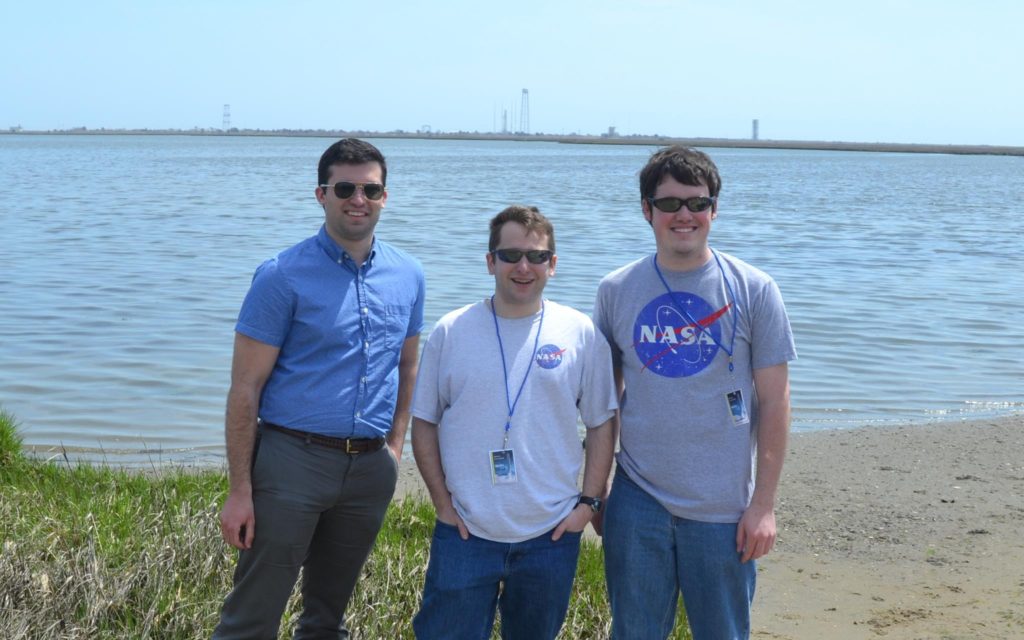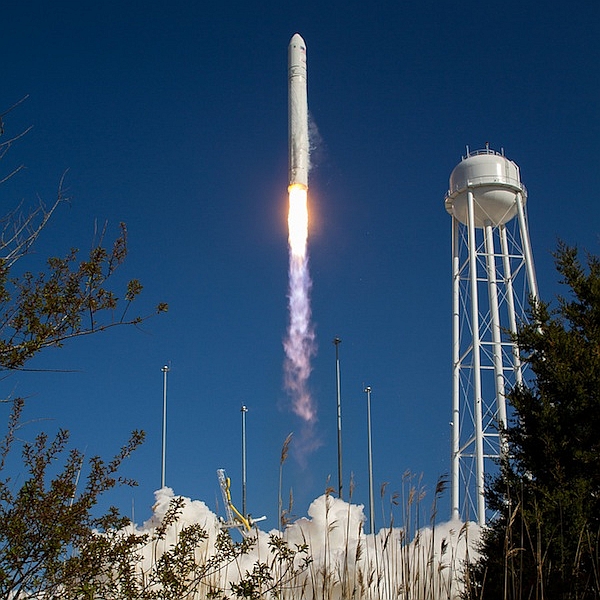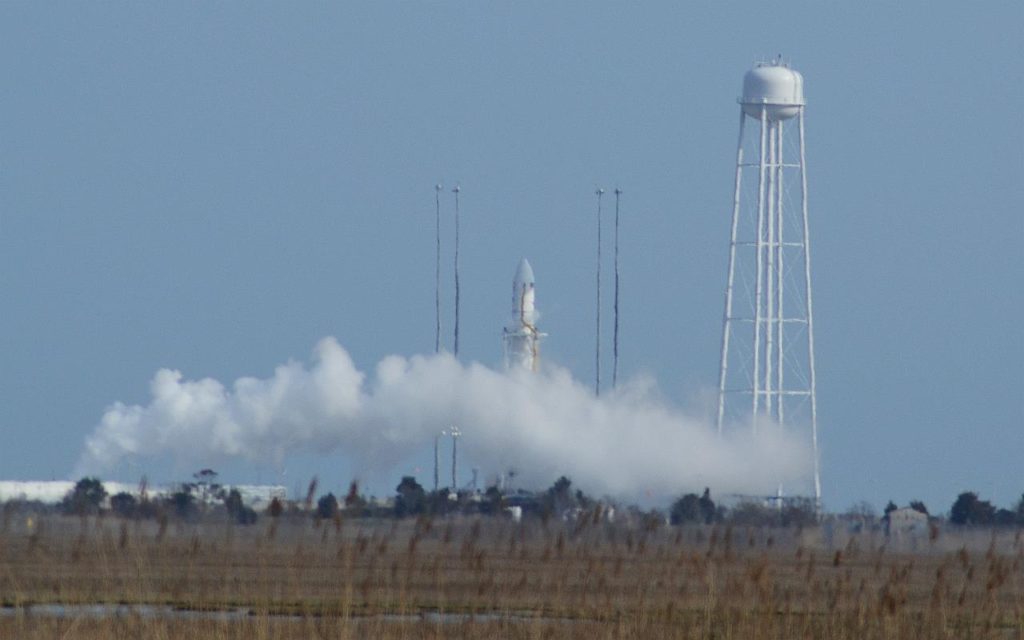June 25, 2013 8:45 pm
A New American Rocket and Cell Phones in Orbit
Today’s guest post is by Elliot Severn, one of StarTalk Radio’s volunteer photographers. You’ve seen his photos of StarTalk Live: The Particle Party and other events. Here, Elliot describes his trip down to the Wallops Island Launch Facility to watch a test flight of the Antares, one of the new breed of commercial rockets flown by corporations under contract to NASA.
Since the conclusion of the Space Shuttle program in 2011, the United States has had limited access to space. But now, an increasing number of commercial rockets and spacecraft are starting to launch from American soil. This is rapidly restoring America’s presence in space and is driving innovation through competition in the spaceflight industry.
Back in April, I travelled to Wallops Island, Virginia to witness the first test launch of the Antares rocket. Antares is a new commercial rocket manufactured by Orbital Sciences Corporation. Its intended purpose is to launch Orbital’s Cygnus spacecraft, which will carry cargo to the International Space Station (ISS) as part of NASA’s Commercial Orbital Transportation Services (COTS) program. Orbital is hoping to follow the recent success of SpaceX, which has already flown three missions to the ISS under commercial contract. (See Blue Bell Ice Cream, Liquid Gold, and the SpaceX Launch) Although I wasn’t able to stay for all three launch attempts, it was an exciting experience and I got an inside look at the Mid-Atlantic Regional Spaceport and some of the actual flight hardware.
My trip to Wallops was far from sane. I was in my last few weeks at Alfred University and had to skip three days of school to go. Thankfully, my professors were supportive. The day before the first launch attempt, I went to a GIS conference in Rochester, met up with some friends from Buffalo, and then took the 9 hour drive to Chincoteague. We arrived at our hotel after 3am. It was just a few miles from Wallops Island and you could see Antares lit up on the launch pad from our balcony.
We woke up the next day nervous to learn that the weather forecast was only 30% favorable, but remained optimistic. I’ve seen the space shuttle launch on the first day with the odds against it and this test flight had a launch window extending all the way from 5pm to 8pm. Later, the forecast increased to 40%, making us more optimistic, but the weather would be on everyone’s mind until the moment of launch.
We headed to the NASA Visitor Center to check out the viewing sites and go to the press briefings. My first impression of Wallops was that it is extremely casual compared to Kennedy Space Center. There was no launch day traffic, no media circus, and the only roads closed off were the bridge to the launch pads and the road to the press site. The public was allowed to view the launch anywhere along the coastline, as close as 1.6 miles from the pad. I stopped to see the rocket from the closest vantage point and talked to some of the people who were waiting in umbrella chairs with their feet in the water. Many of them were employees of Orbital who worked on Antares, anxiously waiting to see years of their work finally pay off.

My friends and I at an unofficial public viewing site. (Matthew Marchincin (L), Elliot Severn (center), Andrew Dianetti (R)) (Photo Credit: Elliot Severn.)
Back at the visitor center (which has a great museum), we found the press area and mingled with the other journalists and NASA Social participants. Several officials came in to answer questions and give us technical details about the test flight. I was interested to learn that the Aerojet AJ26 engines which power the first stage of Antares were actually salvaged Russian NK-33 engines that powered the failed Soviet N-1 moon rocket. Aerojet is modifying the Russian engine and is planning to make an American-built version for NASA’s Space Launch System.
The primary payload was a Cygnus “mass simulator”, which is essentially a giant tin can the same size and weight as the Cygnus cargo vehicle, carrying an array of sensors to evaluate the rocket’s performance. But what I found much more interesting was the secondary payload. Antares also carried the first three “PhoneSats” into orbit. These miniature satellites are among the first spacecraft to be powered by Android smartphones and only cost $3,500. Each PhoneSat consists of an HTC Nexus 1 or a Samsung Nexus S smartphone encased in a 4-inch metal cube, outfitted with a Li-ion battery, solar panels, a GPS receiver, and a two-way S-band radio. To create a mini antenna that would self-deploy, engineers used a piece of metal measuring tape that would naturally spring into position after the PhoneSat separates from the rocket. The three PhoneSats on this flight were named “Alexander”, “Graham”, and “Bell”. One of the backup PhoneSats was passed around the room so we could inspect it closely.
The weather officer gave us a briefing and the chance of favorable conditions had increased to 60%. Low clouds were approaching the area, so they were aiming to launch at the very beginning of the window. This meant we only had one shot. Next thing I knew, it was time to load up our camera gear and get on the bus for the press site. Before we left for the press site, we were given an extensive safety briefing. The likelihood of a catastrophic failure is over 10% for an untested vehicle and watching from so close has risks. In the event of a launch failure, we could foreseeably be in the debris field and certainly could be exposed to volatile gases. The instructions were clear. “If the rocket blows up, get in the bus. We’ll have to get out of there fast.” I will admit, realizing we’d be THAT close got me a little excited.
Arriving at the press site, the first things I noticed were all the long-range tracking cameras. Telephoto lenses and telescopes ranging up to 16’’ were set up on elaborate tracking mounts. Some were on trailers and some were in permanent observatory domes. Then I saw Antares across the marsh, fully fueled and ready to go. Steam was flowing along the sides of its chilled liquid oxygen tank. It was so close, binoculars and telephoto lenses weren’t even necessary. I quickly set up my cameras and started taking test shots, making sure everything was perfect. There were low clouds to the West, but the sea breeze seemed to be holding them off. This breeze was just outside the launch constraints, but launch control decided to raise the limit and push on anyway. Soon, we received confirmation from the NASA TV feed that weather was GO and all systems were GO! Everyone seemed to think we would surely be flying. Concern turned to excitement as the minutes ticked by.
Suddenly, at T-12 minutes, everyone yelled “Hold!” There was lots of radio chatter, but it was hard to hear. They said something about an umbilical. Someone near me had a radio and I asked if they are going to recycle the count. Then there was an eruption of steam on the pad. It was the liquid oxygen being purged from the tanks. We knew that was it for the day. A NASA official came out and yelled “The launch has been scrubbed!” The field erupted with groans and expletives. It turned out an umbilical that connected an Ethernet cable to the second stage flight computer separated prematurely. The cable is designed to unplug itself when the rocket lifts off the pad. The abort required a 48 hour reset. That meant the soonest they could launch was Friday and the forecast was bad. Unfortunately, we couldn’t stay, so we headed back to New York that night.
The next launch attempt on Saturday was scrubbed due to high upper level winds and Antares finally flew successfully on Sunday, April 21st. The launch vehicle performed flawlessly and the PhoneSats were a success, even sending back cellphone camera images from orbit. The first test flight of the Cygnus spacecraft was slated for June, but ISS scheduling conflicts with European and Japanese cargo flights pushed the launch to September. Eight Cygnus flights are planned after the test flight this spring, so Antares should be launching at least 9 more times out of Virginia. With new vehicles finally flying and NASA’s upcoming commercial crew program taking shape, this is quickly becoming an exciting new era in spaceflight.
Get the most out of StarTalk!
Ad-Free Audio Downloads
Ad-Free Video Episodes
Stickers & Mugs
Live Streams with Neil
Priority Cosmic Queries
Early-Access Videos
Learn the Meaning of Life
...and much more




 Become a Patron
Become a Patron

